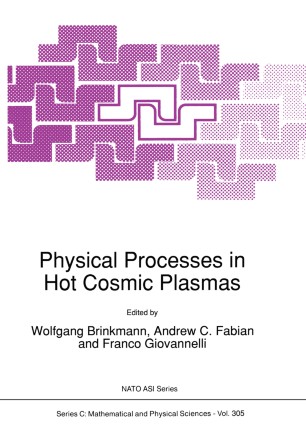| |
|
Citations Index
>>> |
|
Articles With Citations
to Z. Abou-Assaleh
|
|
Theoretical Plasma
Physics |
|
Controlled Thermonuclear Fusion Energy |
| |
|
2017 |
|
|
|
|
2017 No 02 |
| |
Experimental investigation of free and bounded presheaths
in weakly magnetized plasmas
I.J.Kanga
M.-K.Baea
T.Lhob
K.-S.Chunga
- a
Department of Electrical Engineering, Hanyang
University, Seoul, 133-791, South Korea
b
Plasma Technology Research Center, National Fusion
Research Institute, Gunsan, 573-540, South Korea
Received 16 August 2016, Revised 26 November 2016, Accepted
19 December 2016, Available online 20 December 2016.
Abstract
Transports of plasmas in the edge of fusion devices have
similarities in terms of formation of a free presheath and
unclear explanation on the transport process relating the
diffusion coefficient (D⊥) to characteristic length of
perturbing for flux tube (Lc). D⊥ and Lc are investigated by
generating perturbations in various free presheaths due to a
perturbing object located at the axial center of a linear
plasma device, called DiPS (Divertor Plasma Simulator). Free
presheaths are generated due to a
tungsten
perturbing object by changing the
magnetic
flux density. Bounded presheaths are also formed due to a
limiting structure of a magnetic nozzle and due to the given
geometry of DiPS. In terms of
plasma
discharge currents, radial plasma profiles were measured
by using a fast scanning probe system. D⊥ and Lc within the
free presheath regions were calculated by using the measured
plasma parameters and compared with those of bounded
presheaths near the chamber walls. Decay length of
plasma
density was introduced to calculation of D⊥. To calculate
the perturbation length (L) of free presheaths, a
theoretical scale factor K was introduced as L=KLc
using a fluid model. Normalized factor δ=D⊥/DB, where DB= Bohm
diffusion coefficient, were obtained as 8 at free presheaths
and 11 at bounded presheaths.
References
[4]
S.L. Gulick, B.L. Stansfield,
Z. Abou-Assaleh,
C. Boucher, J.P. Matte,
T.W. Johnston, R. Marchand,
J. Nucl. Mater 176 (1990) 1059.
|
|
|
2017 No 01 |
|
https://link.springer.com/book/10.1007/978-94-009-0545-0
Physical Processes in Hot Cosmic
Plasmas
https://books.google.ca/books?

https://link.springer.com/chapter/10.1007/978-94-009-0545-0_8
Physical Processes in Hot
Cosmic Plasmas pp
157-180| Cite as
Classical Transport Properties of Plasmas
C. T. Dum
Max-Planck Institut für Physik
und Astrophysik Institut für extraterrestrische
PhysikGarchingFederal Republic of Germany
Abstract
Classical transport theory is discussed, with special emphasis
on recent developments necessitated by the particular properties
of Coulomb collisions. These properties are contrasted with
scattering by neutral particles and by plasma turbulence. The
rapid decrease of the scattering cross section with energy
usually requires extensions of the Chapman-Enskog method. A
method applicable to isotropization by Coulomb collisions, or
any other (turbulence) scattering mechanism, is outlined. The
structure of transport relations is exhibited for this more
general case. The potential and the problems associated with
various truncation schemes for an expansion of the distribution
function or its moments is discussed. Recent methods for dealing
with the breakdown of collision dominated transport are
illustrated for electron heat flux.
References
Rogers, J. H., De Groot, J. S.,
Abou-Assaleh, Z.,
Matte, J. P., Johnston, T. W., and Rosen, M. D. (1989) ‘Electron
heat transport in a steep temperature gradient’, Phys. Fluids B,
1, 741–749.
|
|
| |
|
|
|
Citations Index
>>> |
|
